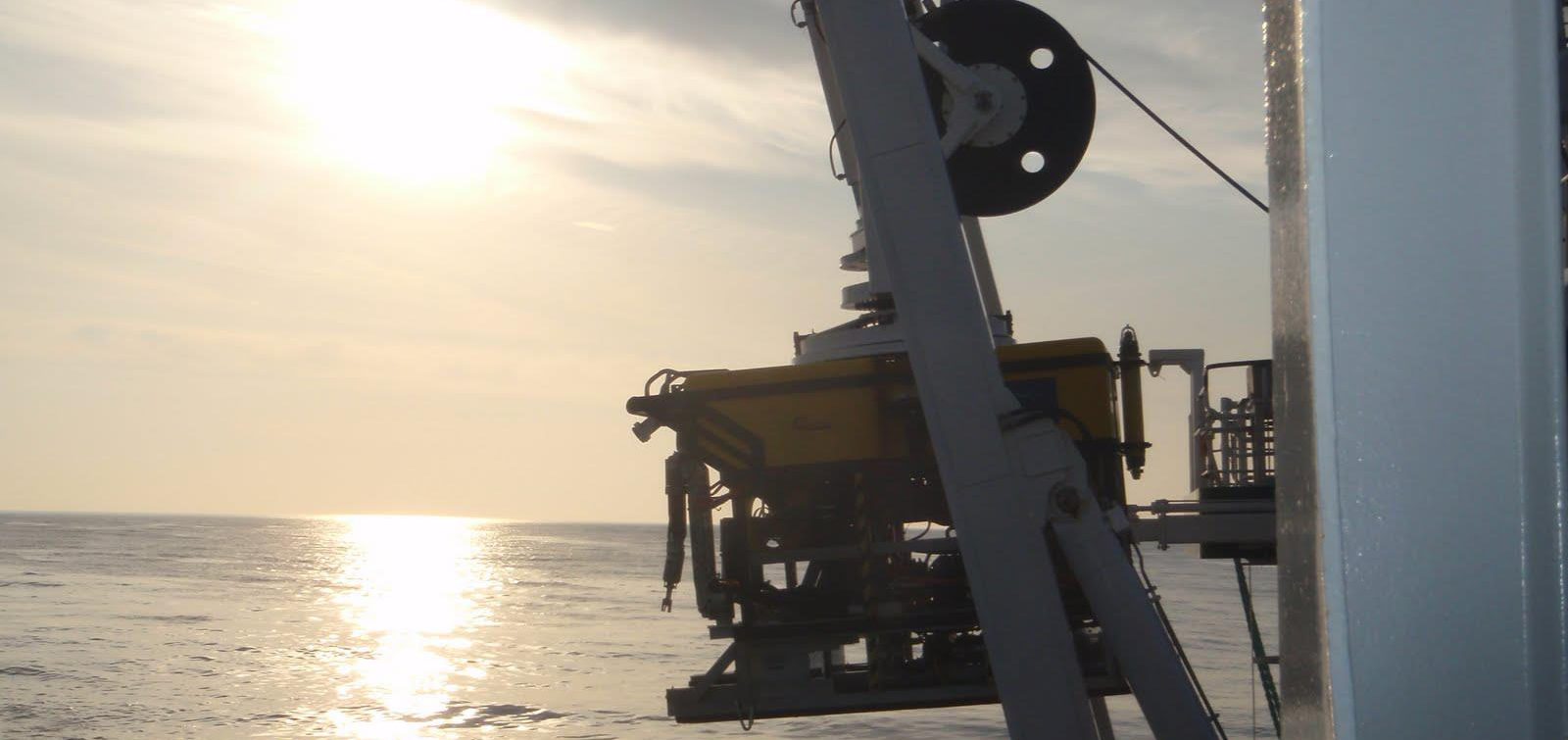
A benthic lander is a large three-legged frame with oceanographic instruments and sensors attached to it. These measure a range of parameters in-situ at the seabed; such as in this case, the current speed, temperature, salinity and turbulence. They are designed to operate in some cases 1000s of meters below the sea surface. Weights or ballasts are used to make the otherwise positively buoyant lander land down on the seafloor.
Here it was deployed from the Irish research vessel the Celtic Voyager in Galway Bay, West of Ireland, during a cruise by the National University of Ireland, Galway. The lander remains monitoring the conditions at the seabed for one month, in this case at depth of ~25m. Whilst out at sea during this period, it observes the impact of storm waves on the sediment transport. By making measurements at various heights above the seabed, it can obtain a profile of the benthic boundary layer and allow us to study how this changes during a storm.
By adding different sensors, you can also measure the chemical and biophysical properties of the water at the sediment-water interface. In-situ measurements allow us to study in the natural laboratory of the sea, without the need to remove anything. The measurements obtained by benthic landers are often used to verify as well as compliment laboratory results made under controlled situations.
It also has an acoustic positioning transponder which responds to the ship’s positioning call, to locate it for collection after its deployment. The weights or ballasts are released, with the buoyancy from the yellow floats allowing the lander to float back up to the surface.
















